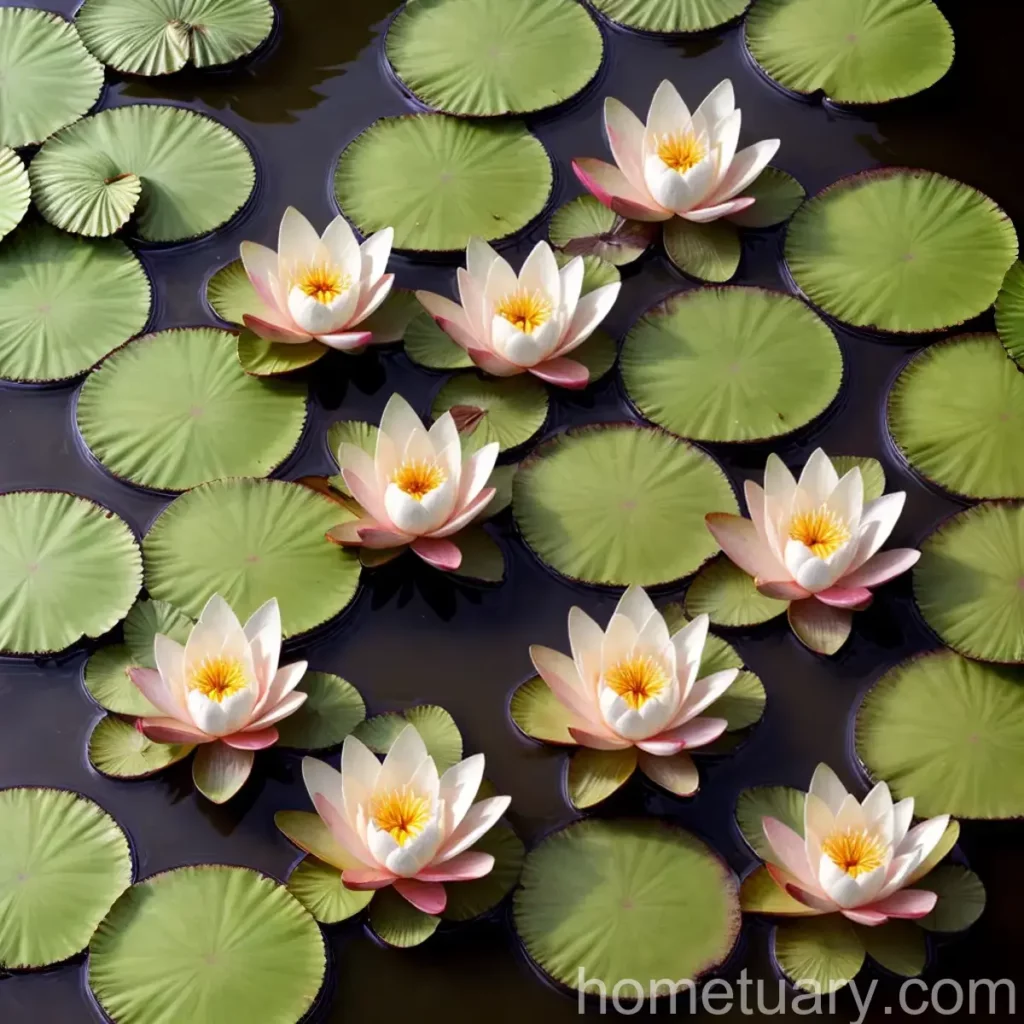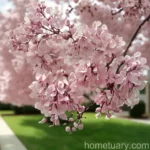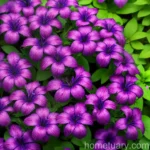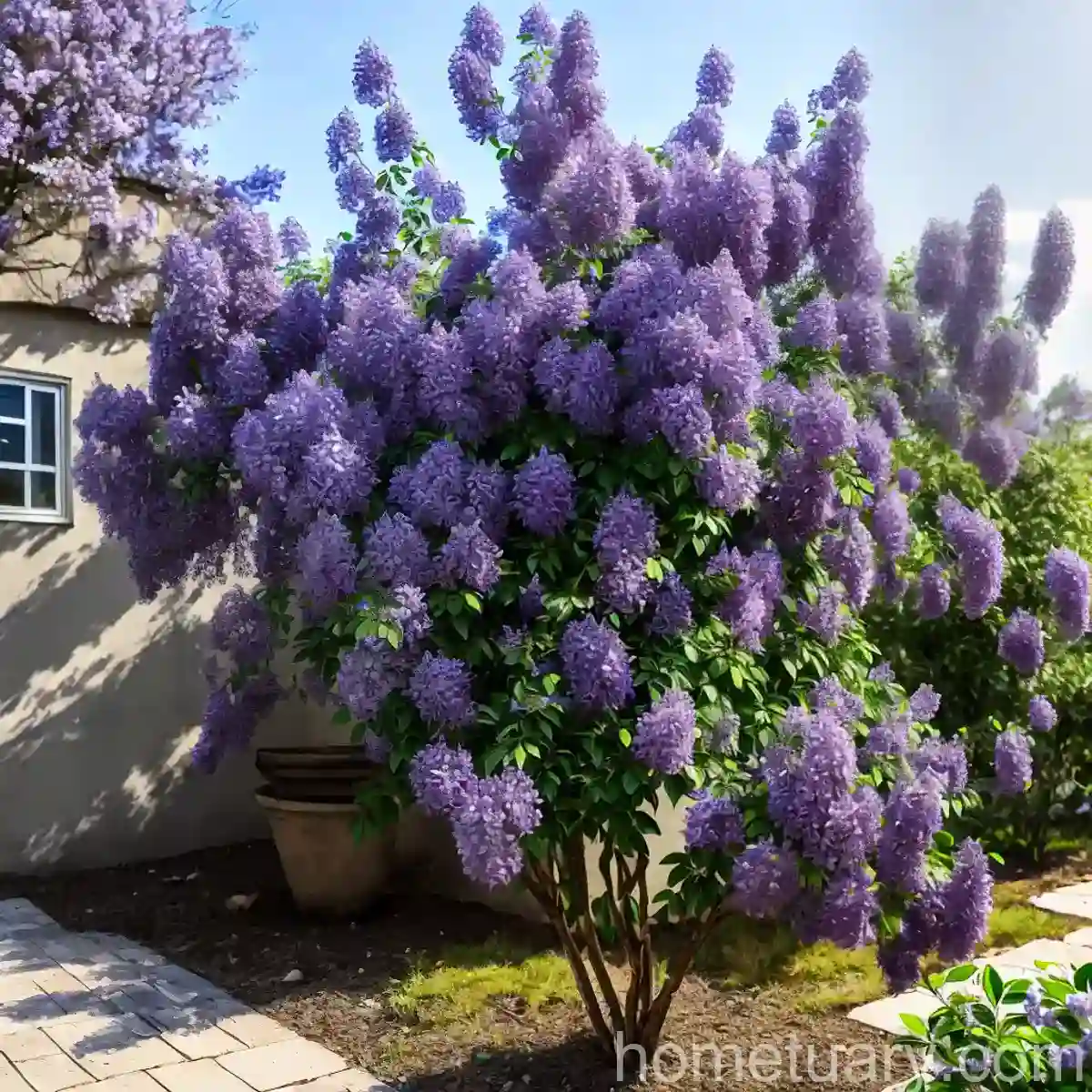The Amazing Hardy Water Lily (Nymphaea ‘Comanche’)
Plants have always captivated our imagination with their sheer beauty and intriguing characteristics. From the lush tropical rainforests to the serene tranquility of a backyard garden pond, plants play an essential role in our lives. One such enchanting plant is the hardy water lily, scientifically known as Nymphaea ‘Comanche’. In this comprehensive guide, we will delve into the captivating world of hardy water lilies, focusing on the exquisite Nymphaea ‘Comanche’.
Join me on this botanical journey as we explore the culture, uses, cultivation techniques, and fascinating aspects of Nymphaea ‘Comanche’. Whether you’re a seasoned gardener or a budding enthusiast, there’s something magical about the hardy water lily that’s sure to leave you spellbound.
What is the Hardy Water Lily (Nymphaea ‘Comanche’)?
The hardy water lily, Nymphaea ‘Comanche’, is a stunning aquatic plant renowned for its vibrant and captivating blooms. As a member of the Nymphaeaceae family, this particular variety is celebrated for its resilience and adaptability to a wide range of aquatic environments. Originating from the Americas, ‘Comanche’ is a hybrid cultivar with distinct characteristics that set it apart from other water lilies.
Key Takeaways – Hardy Water Lily (Nymphaea ‘Comanche’)
Before we delve deeper into the world of Nymphaea ‘Comanche’, let’s take a moment to highlight some key takeaways about this remarkable plant:
- Nymphaea ‘Comanche’ is a striking hardy water lily variety with captivating flower colors.
- Its unique characteristics make it an ideal choice for beginners and seasoned gardeners alike.
- Growing Nymphaea ‘Comanche’ requires attention to water, sunlight, fertilizer, soil, and pruning.
- Propagation of ‘Comanche’ can be achieved through various techniques, catering to diverse gardening preferences.
Now, with these key points in mind, let’s immerse ourselves in the captivating realm of Nymphaea ‘Comanche’.
Culture of Nymphaea ‘Comanche’
Understanding the cultural requirements of Nymphaea ‘Comanche’ is essential for cultivating and nurturing this exquisite water lily. From its preferred growing conditions to its role in aquatic ecosystems, let’s explore the cultural nuances that shape the life of ‘Comanche’.
Uses of Nymphaea ‘Comanche’
Nymphaea ‘Comanche’ serves a multitude of purposes, making it a highly versatile and valuable addition to water features and aquatic landscapes. Some of its primary uses include:
- Ornamental Beauty: The captivating blooms of Nymphaea ‘Comanche’ add a touch of elegance to ponds, water gardens, and other aquatic settings.
- Habitat Enhancement: ‘Comanche’ provides shelter and habitat for a variety of aquatic organisms, contributing to the ecological balance of water environments.
- Water Purification: Through its natural filtration capabilities, ‘Comanche’ helps maintain water clarity and purity, benefiting aquatic life and overall pond health.
Now that we’ve glimpsed into the diverse uses of Nymphaea ‘Comanche’, let’s embark on a journey to understand its specific cultural requirements.
Water Requirements for Nymphaea ‘Comanche’
Water is an indispensable element in the life of Nymphaea ‘Comanche’, and understanding its aquatic needs is crucial for successful cultivation. Here are the key considerations related to water:
- Depth: ‘Comanche’ thrives in water depths ranging from 12 to 24 inches, making it ideal for ponds and water features with varying water levels.
- Water Quality: It prefers clean, still or slow-moving water with minimal disturbance, ensuring optimal growth and flowering.
Sunlight Preferences of Nymphaea ‘Comanche’
Just like any other plant, Nymphaea ‘Comanche’ has specific sunlight requirements that influence its overall health and vitality. Here’s what you need to know about its sunlight preferences:
- Sun Exposure: ‘Comanche’ flourishes in full sun, requiring at least 6 hours of direct sunlight daily to promote abundant and vigorous blooming.
- Shading: While it thrives in full sun, it can also tolerate partial shade, especially in regions with intense sunlight or high temperatures.
Understanding the delicate balance between water and sunlight is vital in creating an optimal environment for the growth and flourishing of Nymphaea ‘Comanche’.
Fertilizer Application for Nymphaea ‘Comanche’
Fertilization plays a pivotal role in sustaining the health and vigor of Nymphaea ‘Comanche’. Selecting the right fertilizer and applying it judiciously can significantly impact the plant’s growth and blooming potential. Here are the key considerations for fertilizing ‘Comanche’:
- Balanced Fertilizer: A granular, slow-release fertilizer with balanced nutrients, such as 10-10-10 or 5-5-5, is suitable for ‘Comanche’.
Soil Requirements for Nymphaea ‘Comanche’
While ‘Comanche’ resides in aquatic environments, the composition of its planting medium or soil bed plays a crucial role in its sustenance. Here’s what you need to know about the soil requirements for Nymphaea ‘Comanche’:
- Soil Type: ‘Comanche’ prefers a loamy or clayey substrate with adequate organic matter to anchor its rhizomes and promote nutrient uptake.
Pruning Techniques for Nymphaea ‘Comanche’
Pruning is an essential aspect of maintaining the health and aesthetics of Nymphaea ‘Comanche’. Regular pruning ensures that the plant remains vibrant and continues to produce stunning blooms. Here’s a glimpse into the pruning techniques for ‘Comanche’:
- Removal of Spent Flowers: Deadheading or removing spent flowers encourages the plant to divert its energy towards producing new blooms.
Propagation Methods for Nymphaea ‘Comanche’
Propagating Nymphaea ‘Comanche’ allows gardeners to expand their collection and share the beauty of this hardy water lily with others. Several techniques can be employed for propagating ‘Comanche’, including:
- Division: Splitting the rhizomes and planting the divided sections in separate containers or areas of the pond facilitates the propagation of ‘Comanche’.
- Seeding: Growing ‘Comanche’ from seeds offers a rewarding and educational experience, allowing for the exploration of the plant’s life cycle and genetic diversity.
Through these propagation methods, ‘Comanche’ can continue to thrive and enchant new enthusiasts with its beguiling allure.
Now that we’ve gained insights into the cultural requirements of Nymphaea ‘Comanche’, let’s uncover some additional fascinating aspects and practical advice that will enhance our appreciation of this wondrous plant.
Popularity of Nymphaea ‘Comanche’
The widespread popularity of Nymphaea ‘Comanche’ stems from its striking beauty and adaptability, making it a cherished addition to ponds, water gardens, and aquatic landscapes. Its allure has captivated the hearts of many enthusiasts, leading to its widespread cultivation and admiration in aquatic horticulture.
Common Diseases of Nymphaea ‘Comanche’
As with any plant, ‘Comanche’ is susceptible to certain diseases that can affect its overall health and vitality. Understanding these common diseases and their management is essential for safeguarding the well-being of Nymphaea ‘Comanche’. Some of the prevalent diseases include:
Disease Diagnosis
- Leaf Spot: Characterized by the presence of dark lesions on the leaves, this fungal disease can affect the aesthetic appeal and vigor of ‘Comanche’.
Common Pests Affecting Nymphaea ‘Comanche’
Pest infestations can pose significant challenges to the health and beauty of Nymphaea ‘Comanche’. Recognizing these common pests and implementing appropriate control measures is crucial for preserving the splendor of ‘Comanche’. Some of the typical pests include:
Botanist’s Tips
- Aphids: These small, soft-bodied insects can cluster on the undersides of the leaves, sucking sap and causing wilting and deformities. Regular monitoring and targeted insecticidal treatments can help manage aphid infestations.
Now let’s explore some interesting fun facts uncovering the enchanting qualities and remarkable characteristics of Nymphaea ‘Comanche’.
Botanist’s Tips for Nymphaea ‘Comanche’
Here are some invaluable tips and insights from experienced botanists that will enrich your journey with Nymphaea ‘Comanche’:
- Regular Care: Consistent monitoring and care, including water quality checks, fertilization, and grooming, are key to ensuring the health and vigor of ‘Comanche’.
- Seasonal Considerations: Adapting cultivation practices to seasonal changes, such as water temperature variations and sunlight exposure, can optimize the growth and blooming of ‘Comanche’.
Fun Facts about Nymphaea ‘Comanche’
- Fragrant Blooms: Nymphaea ‘Comanche’ is celebrated for its delightfully fragrant flowers, adding an olfactory dimension to its visual allure.
- Color Variations: The flower colors of ‘Comanche’ may range from vibrant pinks and oranges to softer peach and apricot hues, offering a spectrum of visual delights.
With these captivating fun facts, the enchanting allure of Nymphaea ‘Comanche’ becomes even more apparent, weaving a tapestry of wonder and discovery.
Now, let’s delve into additional resources that will enrich your understanding and appreciation of Nymphaea ‘Comanche’, guiding you through its cultivation, care, and captivating role in aquatic ecosystems.
Links to External Resources
Plant Name: “Hardy Water Lily (Nymphaea ‘Comanche’)”
To further enhance your knowledge and exploration of Nymphaea ‘Comanche’, here are some valuable external resources that offer insights, guidance, and inspiration:
- The Water Garden Society
- Royal Horticultural Society’s Guide to Water Lilies
- Aquatic Plant Cultural Guide
By delving into these external resources, you can expand your horizons and deepen your connection with the captivating world of Nymphaea ‘Comanche’.
Conclusion
The hardy water lily, Nymphaea ‘Comanche’, is a gem in the realm of aquatic flora, captivating enthusiasts with its resplendent blooms and remarkable qualities. Its cultural significance, ecological contributions, and enriching presence in water features make ‘Comanche’ a plant of enduring allure and value.
As we conclude this botanical odyssey, may the enchanting beauty and intrinsic grace of Nymphaea ‘Comanche’ inspire you to embark on your own journey of discovery and appreciation for the wonders of nature’s botanical tapestry.
With each vibrant bloom and lush green pad, Nymphaea ‘Comanche’ beckons us to immerse ourselves in the tranquil elegance of water lilies, fostering a deeper connection with the natural world and the captivating allure of aquatic horticulture.
References
- “Nymphaea ‘Comanche’ Water Lily” – Missouri Botanical Garden. Available at: https://www.missouribotanicalgarden.org/PlantFinder/PlantFinderDetails.aspx?kempercode=e391
- “Hardy Water Lilies for Ponds” – University of Florida IFAS Extension. Available at: https://edis.ifas.ufl.edu/mg029
- “Water Lily Care” – The American Society of Water Lily Hybridizers. Available at: http://www.waterlilies.org/care.html















